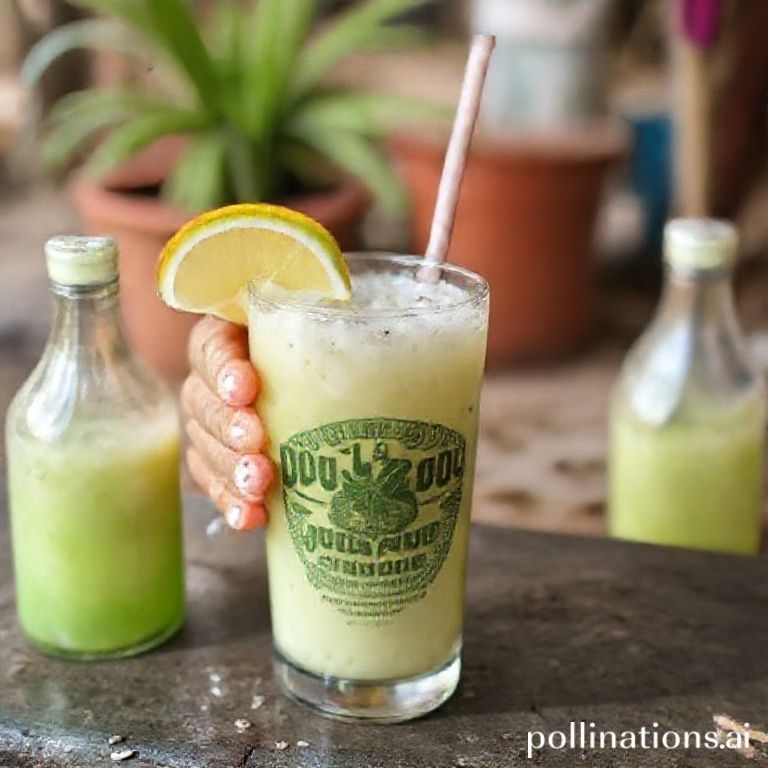For centuries, pulque, a milky, fermented beverage derived from the agave plant, has been a staple in Mexican culture. Revered by the Aztecs as a sacred drink, it held a prominent place in religious ceremonies and daily life. While its popularity waned for a time, overshadowed by the rise of beer and other alcoholic beverages, pulque is experiencing a vibrant resurgence, captivating a new generation with its unique flavor and historical significance.
This ancient elixir, often misunderstood, is more than just a drink; it’s a living testament to Mexico’s rich heritage and agricultural ingenuity. From the meticulous cultivation of the agave to the delicate fermentation process, every step in pulque production is steeped in tradition. Let’s delve into the fascinating world of pulque, exploring its history, production, and the reasons behind its remarkable comeback.
A Glimpse into Pulque’s Ancient Past
Pulque’s roots run deep into pre-Hispanic Mexico. The Aztecs, who called it “Iztac octli” (white liquor), considered it a gift from the gods, particularly Mayahuel, the goddess of agave. It was consumed during religious rituals, festivals, and even medicinal practices. Only priests and high-ranking officials were initially allowed to partake, highlighting its sacred status. Over time, its consumption spread to the general population, becoming an integral part of their culture.
The Legend of Mayahuel
The story of Mayahuel is intertwined with the origins of pulque. Legend has it that Quetzalcoatl, the feathered serpent god, fell in love with Mayahuel, a beautiful maiden guarded by her grandmother. To escape her captivity, they transformed themselves into intertwined trees. When Mayahuel’s grandmother discovered their hiding place, she destroyed one of the trees, killing Mayahuel. From her remains sprung the agave plant, the source of pulque, forever linking the drink to her memory.
The Art of Pulque Production
The production of pulque is a labor-intensive process that requires patience and skill. It all begins with the agave plant, specifically the *Agave salmiana* species. The plant takes approximately 8-12 years to mature, accumulating sugars in its core, or “piña.”
From Agave to Elixir: The Process
- Harvesting the Agave: Once mature, the piña is harvested and its core is extracted.
- Extracting the Aguamiel: A cavity is carved into the center of the piña, and the sap, known as “aguamiel” (honey water), is extracted over several months. This sweet liquid is the base of pulque.
- Fermentation: The aguamiel is then transferred to fermentation vats, traditionally made of wood. Natural yeasts present in the environment initiate the fermentation process, converting the sugars into alcohol.
- The Final Product: The fermentation process typically lasts for several days, resulting in a milky, slightly viscous beverage with a characteristic sour and yeasty flavor.
Why the Comeback? Rediscovering Pulque’s Charm
Pulque’s resurgence is driven by several factors. Firstly, there’s a growing appreciation for traditional Mexican culture and a desire to preserve ancestral practices. Younger generations are increasingly interested in rediscovering their roots and embracing the authenticity of pulque over mass-produced beverages.
Health Benefits and Unique Flavors
- Nutritional Value: Pulque is rich in probiotics, vitamins, and minerals, offering potential health benefits compared to other alcoholic drinks.
- Artisanal Appeal: The artisanal nature of pulque production resonates with consumers seeking unique and authentic experiences.
- Variety of Flavors: Many *pulquerias* (pulque bars) now offer flavored pulques, infused with fruits, vegetables, and spices, adding a modern twist to the traditional drink.
Furthermore, pulque is becoming increasingly recognized as a sustainable beverage option. Agave plants require minimal water and can thrive in arid environments, making them an environmentally friendly crop compared to other sources of alcohol.
Experiencing Pulque Today
Today, *pulquerias* are experiencing a renaissance, particularly in Mexico City and other urban centers. These traditional bars offer a glimpse into the past, where friends and families gather to enjoy pulque, share stories, and celebrate Mexican culture. Visiting a *pulqueria* is more than just drinking; it’s an immersive experience that connects you to the heart of Mexico.
Conclusion
Pulque’s journey from a sacred Aztec beverage to a revitalized cultural icon is a testament to its enduring appeal. As more people discover its unique flavor, nutritional benefits, and historical significance, pulque is poised to continue its comeback, solidifying its place as a cherished symbol of Mexican heritage. So, the next time you’re in Mexico, be sure to seek out this ancient elixir and experience a taste of history.
If you enjoyed learning about pulque, share this article with your friends and discover more fascinating insights into Mexican culture on Life in Mexico!
IMAGE: A bustling pulqueria in Mexico City. Patrons are laughing and chatting while enjoying glasses of pulque. The lighting is warm and inviting, creating a convivial atmosphere. The style is documentary, capturing the authenticity of the scene. Traditional Mexican decorations adorn the walls, and colorful murals add to the vibrant ambiance.


